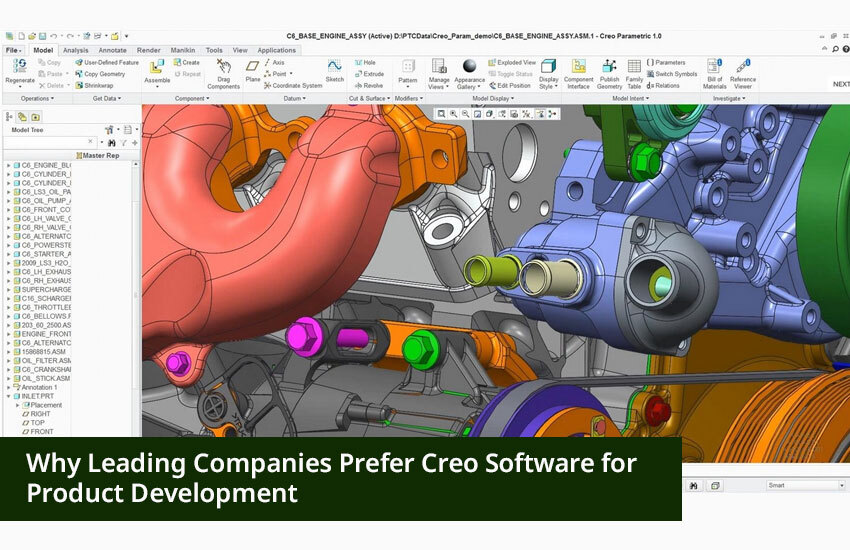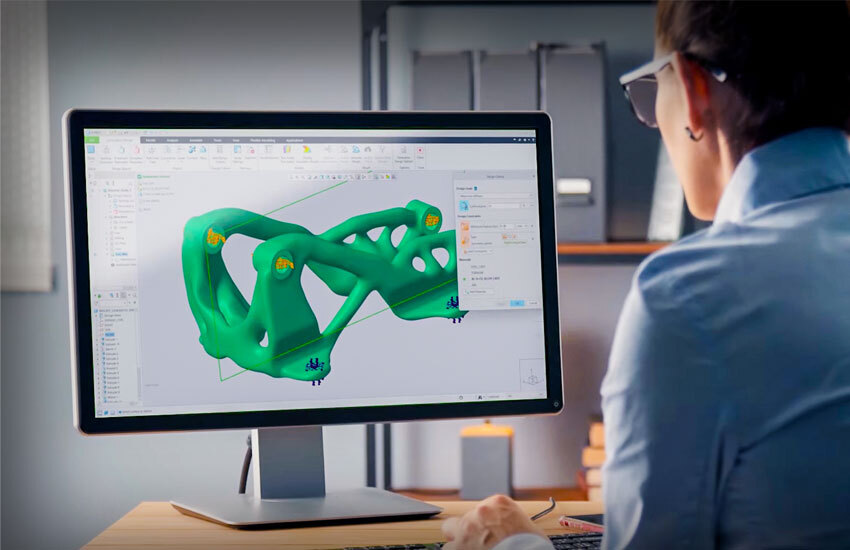
In the highly competitive product development industry, top firms are always looking for new and improved tools to improve their design processes. The PTC-developed Creo software has become the go-to option for business executives. The reasons for this preference are explored in this article, which also highlights Creo's capabilities and advantages that meet the changing demands of contemporary engineering and design.
Creo software provides a strong toolkit that makes several parts of product development easier:
Parametric Design: Design characteristics can be precisely controlled with parametric design, making changes and iterations simple.
Creo for 3D Modeling and Simulation: The ability to create intricate 3D models and run simulations to test a product's performance in real-world scenarios is made possible by 3D modeling and simulation.
Assembly Management: Assembly management makes it easier to create and modify intricate products. Assemblies, which is crucial for overseeing intricate, multiple designs in industries like aerospace and automotive.
Creo is a flexible tool for engineers and designers because of these qualities, which improve productivity and streamline processes. vLearn more about Creo software by reading our interesting blog, “Explore Creo Software: A Game-Changer for 3D CAD Design and Innovation”!
Creo's integrated simulation tools are one of its best features:
Finite Element Analysis (FEA): Engineers can conduct structural evaluations using finite element analysis (FEA) to guarantee the longevity of products.
Computational Fluid Dynamics (CFD): The study of fluid flow inside and around designs is made possible by computational fluid dynamics, or CFD, which is essential for performance optimization.
Dynamic and Fatigue Analysis: Estimates a product's lifespan under cyclic loads and evaluates its response to dynamic forces.
By eliminating the need for physical prototypes and speeding time-to-market, these capabilities enable engineers to verify and optimize designs early in the development process.
Artificial intelligence is used by Creo's generative design tools to investigate the best possible design solutions:
Design Optimization: Design optimization produces creative and effective structures by automatically generating design alternatives based on predetermined restrictions and objectives.
Material Efficiency: Finds ways to use less material without sacrificing usefulness or strength.
Businesses may design lightweight, reasonably priced goods that satisfy performance standards because of these qualities.
Complex product data management requires integration with Product Lifecycle Management (PLM) systems:
Windchill PLM Integration:Creo easily interfaces with PTC's Windchill, enabling effective version control, data management, and team collaboration.
By guaranteeing that all parties involved have access to current information, this integration improves decision-making and lowers errors.
Because of Creo's modular nature, businesses can customize the program to meet their own requirements:
Scalable Solutions: Makes sure businesses only spend money on the tools they need by providing a variety of modules that may be added as needed.
Customization: Offers choices for altering interfaces and workflows, bringing the software into line with current procedures and increasing user uptake.
Because of its adaptability, Creo may be used by businesses of different sizes and sectors, from tiny design firms to massive manufacturing conglomerates.
Creo adapts to industry demands thanks to PTC's dedication to ongoing improvement:
Frequent Updates: Brings in new features and improvements to keep the program up to date with user input and technical developments.
User Community: Encourages a cooperative atmosphere for users by keeping an active community that exchanges resources, advice, and best practices.
Businesses who use Creo are guaranteed to remain competitive in a market that is changing quickly thanks to this commitment to innovation.
Creo's cloud-based solutions enable real-time collaboration by allowing multiple stakeholders to work on designs simultaneously, which ensures:
Improved Communication: Teams can share design updates instantly, reducing miscommunication and errors;
Faster Decision-Making: Access to real-time data allows for quicker iterations and approvals, expediting project timelines;
Secure Data Management: Cloud-based storage and access control ensure that sensitive design files remain protected while being accessible to authorized users.
User Community: Maintains an active community that shares best practices, advice, and resources, fostering a collaborative environment for users.

Investing in Creo Software for Engineering Design is cost-effective in the long run because of its efficiency-driven features.
Businesses benefit from:
Lower Prototyping Costs: By eliminating the need for physical prototypes, virtual simulations save material and manufacturing expenses;
Lower Error Rates: Intelligent design tools reduce human errors, reducing rework and associated costs;
Higher ROI: Optimized workflows lead to increased productivity, faster time-to-market, and greater profitability.
Creo fits in well with the ways that industries are adopting digital transformation and AI-driven solutions by combining:
Optimizing Designs with Artificial Intelligence: Product designs are improved and refined with the use of AI-driven insights.
Augmented Reality (AR) Capabilities: By enabling engineers to showcase designs in immersive settings, Creo's AR visualization tools enhance stakeholder involvement.
Integration of IoT with Smart factory: Enhances factory efficiency by enabling predictive maintenance and real-time monitoring.
Because of its extensive toolkit, sophisticated simulation capabilities, generative design features, smooth PLM integration, scalability, and ongoing innovation, top companies choose Creo Software for product development. These qualities help businesses improve teamwork, expedite their design processes, and launch better goods more quickly. Additionally, Creo is a vital tool for companies trying to stay ahead in a market that is becoming more and more competitive due to its cloud-based solutions, affordability, and compatibility with emerging technology.
Creo stands out as a strong and flexible solution that enables businesses to successfully handle the ever-changing demands of product development, guaranteeing long-term growth and innovation in their specialized fields.
Let’s connect: www.modelcamtechnologies.com
Email: sales@modelcamtechnologies.com
Mobile no : +91 8237016167
©Copyright 2025. All rights reserved by Modelcam Technologies Private Limited PUNE.